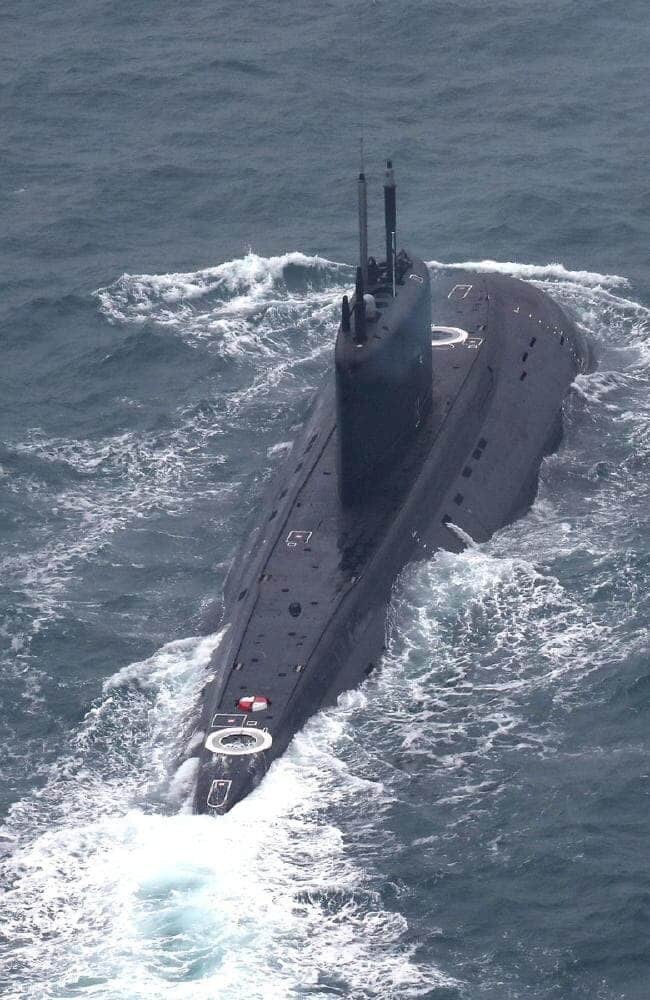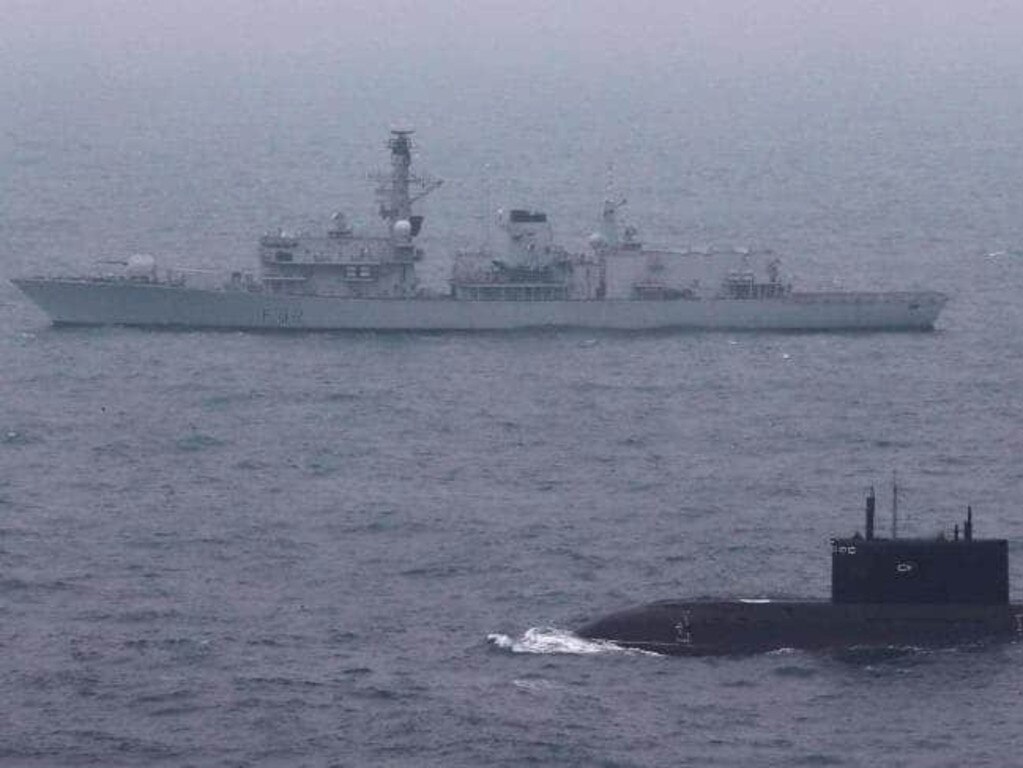Russian Varshavyanka-class stealth submarines to be based in Pacific
TWO new Russian ‘black hole’ stealth submarines are being sent to reinforce its presence in the Pacific. They’ll be among Australia’s new frigates’ toughest opponents.
MOSCOW’s been boosting its presence in the Asia Pacific. It’s been sending bombers on visits to Indonesia. Its fleet regularly exercises with the Chinese. Now its sending reinforcements — in the form of two new stealth submarines.
Russian state-media outlet TASS reports the two Project 636.3 Varshavyanka-class diesel-electric submarines will be deployed with its Pacific Fleet in November 2020. They’re the first of an expected six to eventually be delivered to the region.
While they have significantly less endurance than nuclear-powered submarines, diesel-electric boats are generally much quieter.
The Varshavyanka-class is an evolved version of the Cold War era Kilo-class submarines. But considerable new technology has gone into the construction of the 4000 ton vessels.

“The multipurpose, low-noise and highly manoeuverable Varshavyanka-class (Project 636.3) submarine is named after the city of Rostov-on-Don,” Russia Today reports.
“Armed with 18 torpedoes and eight surface-to-air Club missiles, Project 636.3 submarines are mainly intended for anti-shipping and anti-submarine missions in relatively shallow waters. They have an extended combat range and can strike surface, underwater and land targets”.
RELATED: What we know about Russia’s new stealth fighter
Military analysts say new materials, coatings, dampersand noise-cancelling technology have been introduced to make the boats quieter. And new rechargeable batteries give the new boats about 25 per cent extra range, while allowing its electric-drive to operate in virtual silence.
They also have modern combat systems.

The submarines are designed to be hunter-killers, tracking down and sinking opposing submarines and ships. But they’re also capable of stealthy reconnaissance and patrol missions.
Moscow state-run media boasts the submarines are the quietest in the world.
They certainly pose a challenge to the West.
Last year, NATO engaged in a three-month game of cat-and-mouse as it attempted to track one of the subs, the Krasnodar, from its North Sea base to the troubled waters of Syria in the Mediterranean. Once there, US and allied frigates, cruisers and P-8 Poseidon aircraft strove to locate the submarine before and after it launched missile attacks on Syrian rebel and Islamic State forces.
EXPLORE MORE: The future battlefield will be inside our bodies
Earlier this year, a similar scenario unfolded as British and US submarines strove to get into position to launch their own missile attacks on Syria. Russia sent out a force of frigates, aircraft — submarines — to track them down. A tense Cold War era pursuit unfolded as the Russian submarines chased a modern British Astute-class nuclear powered submarine for three days.
Australia late last week announced it was spending $35 billion on an order for eight new anti-submarine frigates. The British-design was chosen for its top-of-the-range capabilities, even though other offerings promised a greater degree of Australian involvement in their construction.
The submarine threat in the Indian and Pacific oceans has exploded in recent years, with both China and Russia rapidly updating and expanding their forces. Many other Asian nations have also chosen to build up their submarine fleets.
Australia has initiated a program to build modified French Barracuda-class diesel-electric submarines to replace its ageing Collins-class boats.




